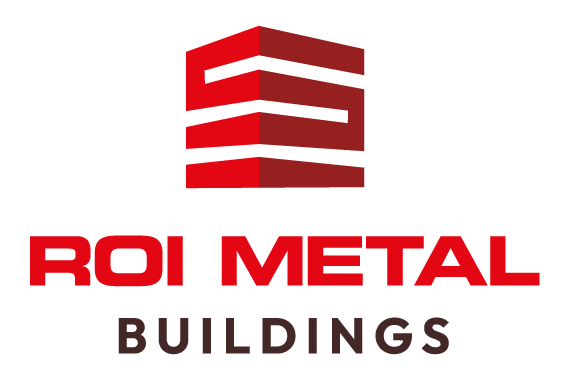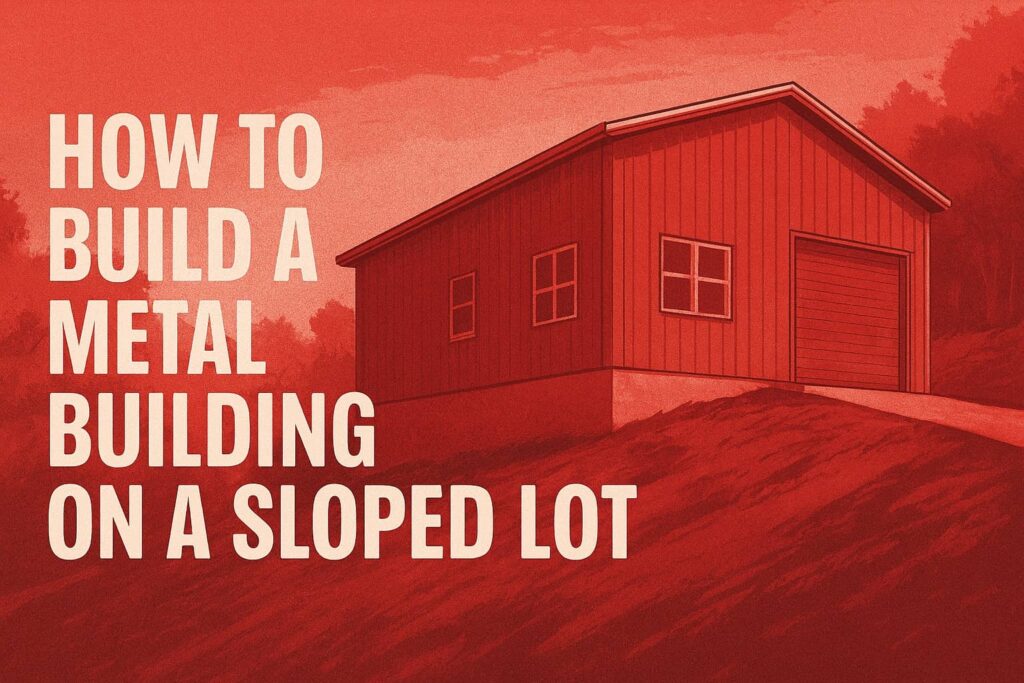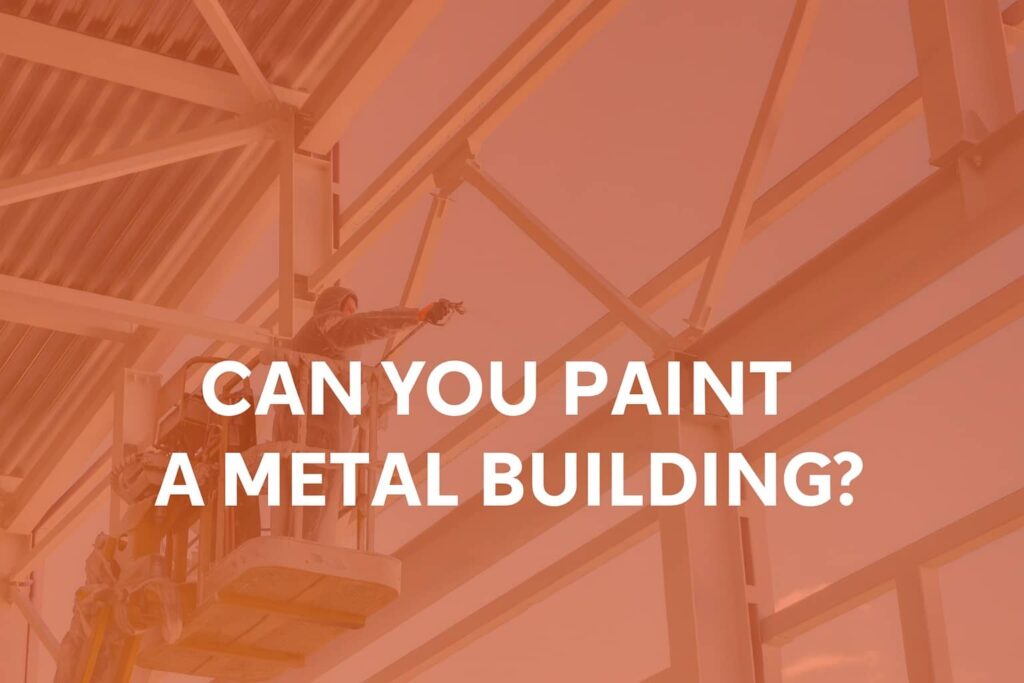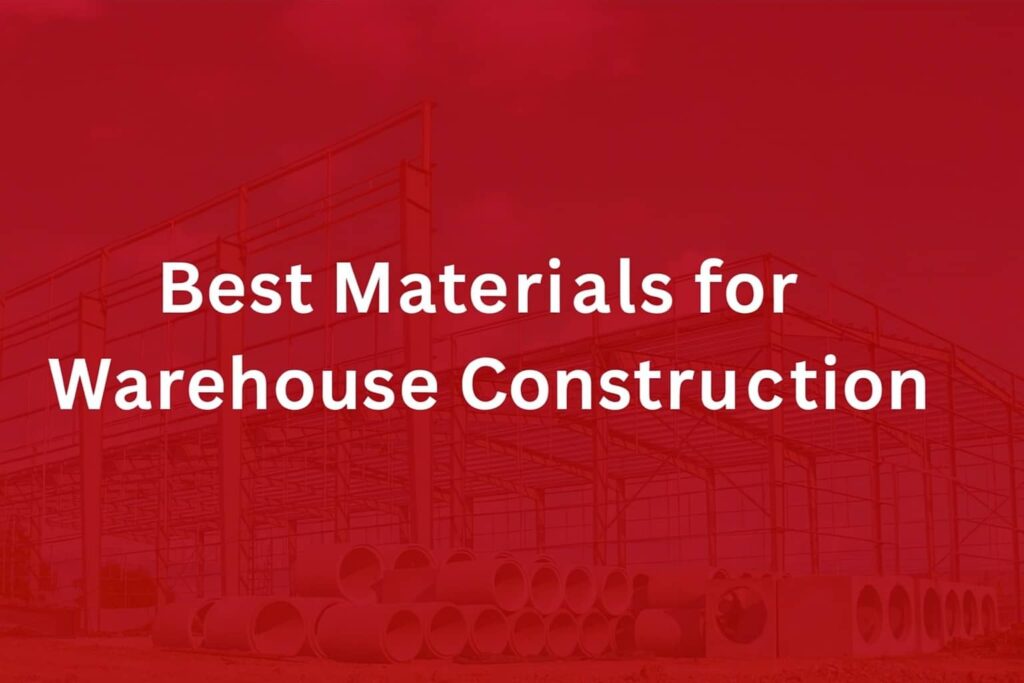Are Metal Buildings A Tax Write-Off? That’s the question of the day. Metal buildings can be a valuable tax write-off for your business if they’re used for operational purposes. According to Section 179 of the IRS tax code, you can deduct the full purchase price of qualifying items bought or financed during the tax year – and yes, metal buildings count too. Imagine acquiring a $50,000 structure for your expanding warehouse; you could deduct that entire amount from your taxable income.
But that’s not all – there are additional deductions beyond just the initial purchase. Let’s dive into common categories like depreciation over time, repairs, maintenance costs, and even regular utility expenses. Understanding these deductions in detail ensures you’re maximizing your savings efficiently while staying compliant with IRS guidelines.
This article wraps up our series about tax write-offs surrounding our metal building offerings. It’s a follow up after last week’s article about, “HOW TO WRITE OFF A BARN ON TAXES“. After answering this question with a detailed guide, we decided to write a more general article about all metal buildings. Keep reading to learn how we can help our customers maximize their tax benefits before the end of the year. If you’ve followed our articles in the past, you’ll remember that we aim to be thorough with our content and to provide as much value as possible.
Yes, metal buildings can qualify as a tax write-off under Section 179 of the IRS, allowing owners to deduct the costs associated with buildings used for business purposes. This classification signifies that these structures are treated as capital expenditures, which can significantly alleviate tax burdens for business owners.

Tax Deductibility of Metal Buildings
When it comes to tax deductions for metal buildings, understanding the details can make a significant difference in your overall financial strategy. Under Section 179 of the IRS tax code, qualifying business owners are allowed to deduct the entire purchase price of metal buildings used for commercial purposes. This means if you buy a metal building—say for storage purposes or as an office space—you can deduct that entire amount from your taxable income. Imagine purchasing a metal building for $100,000; that could mean substantial savings when tax season rolls around. But it doesn’t end there.
In addition to Section 179 deductions, there’s also bonus depreciation. This allows business owners to write off a percentage of the building’s cost in the year it’s placed in service, making it an even more attractive option. For example, if you purchased your metal building after September 27, 2017, and before January 1, 2023, you could benefit from a bonus depreciation of up to 100% in the first year! This accelerated deduction not only eases cash flow but also reinforces the financial viability of designing a building specifically tailored for your operational needs.
It’s essential to remember that there are some rules and limits involved. For instance, Section 179 has annual deduction limits and phase-out thresholds that may affect how much you can claim.
Beyond just these primary deductions, there are other nuances that can further enhance the tax benefits associated with your investment in metal buildings.
One notable point is that interest on any loans taken out to finance the purchase of these buildings can also be deducted as a business expense. This feature permits businesses not only to invest in physical assets but also eases immediate cash flow burdens by allowing interest payments to qualify for deductions. Essentially, every dollar saved through deductions on taxes allows reinvestment back into your business, whether that’s adding new equipment or expanding services.
Furthermore, local and state tax incentives may enhance these benefits. Many jurisdictions have programs aimed at encouraging businesses to invest in infrastructure and job creation, which often translate into additional deductions or credits. However, these incentives vary greatly from one location to another, so it’s worthwhile to consult with a local tax advisor who understands the landscape in your area.
As we explore the intricacies of tax advantages further, it’s crucial to understand how specific deductions apply to various expenses related to running a business.
Are Metal Buildings A Tax Write-Off? Common Tax Deductions
When it comes to metal buildings, the potential tax deductions go beyond just the purchase price. This means that as a business owner or property investor, you need to recognize and leverage various expense categories that can significantly impact your bottom line. Embracing these deductions is essential for maximizing your investment.
Expense Categories
- Depreciation: One of the most important deductions to keep in mind is depreciation. As most property owners are aware, assets like metal buildings don’t maintain the same value over time. The IRS adopts the Modified Accelerated Cost Recovery System (MACRS), which allows owners to deduct a portion of their building’s cost annually for a period of 39 years specifically for commercial properties. Each year presents an opportunity to lower your taxable income, effectively making these structures more financially manageable over time.
- Repairs and Maintenance: The upkeep of your metal building is another area where deductions apply. All costs associated with repairs—whether fixing a leaky roof, replacing damaged siding, or performing routine inspections—can often be written off in the tax year they occur. Regular maintenance not only keeps your building functional but also prolongs its life, enhancing returns on your investment. It’s a win-win situation; take care of your property and benefit financially as well.
- Utilities and Operational Costs: Don’t overlook everyday expenses such as electricity and water bills when calculating your deductions. These costs are often classified as operational expenses, which can be fully deducted from your taxable income too. Expenses related to installed security systems typically qualify as well. Keeping accurate records of these operational costs will ensure you maximize what you can claim and enhance overall cash flow.
By acknowledging these deductions, you’re taking proactive steps toward effective financial management. As we transition from this overview of valuable deductions, understanding the specific regulations governing these tax benefits will further equip you for successful compliance and optimization of advantages.
IRS Regulations and Compliance
When you invest in a metal building, understanding and adhering to IRS regulations is essential. Compliance isn’t just a formality; it’s a safeguard against potential penalties that may arise due to improper documentation or reporting. For instance, if the IRS questions your claim for a deduction, being able to present thorough and organized documentation will become a key factor in protecting your interests.
Detailed documentation is non-negotiable. The IRS requires precise records regarding both the purchase and usage of the metal building. Think of it as creating a safety net—having everything on hand ensures you’re never caught off guard during an audit. Therefore, getting into the habit of maintaining complete and accurate records can save you time and headaches down the line.
Key Documentation:
Among the most vital documents to keep are receipts and invoices. Retaining these shows proof of ownership and purchase price, which are critical in calculating deductions. Forgoing this could mean missing out on significant financial benefits because the IRS unequivocally requires those paper trail evidences.
Next are usage records—these help demonstrate that your metal building is primarily used for business purposes, as claims for personal use typically do not qualify for deductions. Keeping a log of activities or even having photographs can bolster your case.
Lastly, it’s also wise to maintain depreciation schedules. Tracking annual depreciation amounts isn’t just good practice; it forms the foundation for how much you can deduct over time for wear and tear associated with your building. Use accounting software or spreadsheets to ensure this data is readily accessible.
Proper compliance with these regulations not only aids in claiming deductions seamlessly but also minimizes potential red flags during audits. By organizing your documents effectively and remaining proactive about record-keeping, you’re setting yourself up for a smoother experience with the IRS.
Having laid out these crucial regulations, we can now turn our attention to how metal buildings can serve varying needs in both personal and business contexts.
Personal and Business Use Cases
While it’s true that business use presents the greatest tax advantages, personal usage of metal buildings shouldn’t be overlooked. For instance, individuals might find themselves using a metal building as a workshop or garage. By doing so, they could potentially deduct some expenses if the space is utilized for income-generating activities, even if it is part-time or incidental.
Consider a scenario where someone runs a home-based business from their garage. If they store equipment and conduct meetings there, this minor shift in perspective transforms that personal space into a business asset. This opens doors for them to claim certain deductions associated with the building’s maintenance, utilities, and insurance, effectively reducing taxable income.
The situation gets even more interesting in agricultural settings. Farmers who construct metal barns may not just appreciate the practical aspects of these sturdy structures; they stand to gain significant tax benefits as well. They can deduct upkeep costs related to the buildings—everything from repairs to operational expenses—which leads to considerable savings on their tax returns.
Picture a farmer dedicating a newly constructed metal barn entirely for livestock. Not only does this space enhance productivity, but the farmer can also record all costs linked to its operation—these expenses reduce their taxable income, essentially giving back money while ensuring optimal functionality.
Moreover, even homeowners who simply want extra storage could tap into specific local regulations that allow them to claim deductions or credits toward their taxes, depending on regional tax laws related to property improvement or additional structures.
Understanding the potential deductions associated with metal buildings can significantly impact overall financial planning. Regular consultations with tax professionals ensure that both types of users capitalize on every possible credit unique to their circumstances—guarding against missed opportunities in optimizing tax liabilities while enjoying the benefits of having a metal structure tailored to their needs.
With these insights about potential write-offs in hand, it’s essential to explore how construction expenses interplay with these benefits and what additional savings may be available.
Construction Costs and Tax Benefits
When considering the costs associated with constructing a metal building, it’s crucial to understand not only the immediate financial implications but also the opportunities for tax deductions that can alleviate some of that burden.
Initial construction costs may seem daunting; however, they are often tax-deductible especially if the building serves a business function. This means expenses related to permits, land preparation, and materials can be deducted from your taxable income. When you file your taxes, detailing these preliminary costs can significantly reduce your overall tax liability.
Similarly, labor costs play a pivotal role in this equation. The wages paid to individuals directly involved in the construction process qualify as deductible expenses too. It might be surprising to learn that these costs can both reduce business income and provide actual cash savings when it comes time to file taxes. Each worker’s wage adds up, making it worth documenting all expenses associated with labor meticulously. Keeping accurate records will ensure you capture every potential deduction.
Navigating through capitalization can feel complex, yet it’s crucial for maximizing benefits over time. By choosing to capitalize certain construction costs, you spread those expenses out over several years through depreciation. This approach is advantageous because it allows you to claim a portion of the cost each year instead of hitting your bottom line all at once. It’s like spreading out the cost of a new car over the life of your ownership rather than facing a hefty bill upfront.
Understanding how these deductions work enables owners to grasp their impact on cash flow and profitability over the life of the structure. Staying informed about evolving tax laws and regulations concerning constructions—especially for metal buildings—will equip you with essential tools for effective budgeting and financial planning while potentially enhancing your return on investment.
Maximizing Your Tax Deductions
First off, having a clear plan is crucial when navigating the world of tax deductions related to metal buildings. To truly get the most bang for your buck, consulting a tax professional can be an excellent starting point. They can guide you through the maze of regulations and ensure that you’re aware of all available options.
Advanced Strategies
Exploring advanced strategies can open doors to significant savings.
One of the most powerful options at your disposal is Bonus Depreciation. The IRS allows for 100% bonus depreciation on qualifying assets, including metal buildings, meaning you can deduct the entire cost in the first year itself. This is particularly beneficial for businesses looking to invest heavily in infrastructure while reaping immediate tax savings. Essentially, you’re turning a substantial initial outlay into a swift return on investment.
Building on the idea of maximizing deductions, Section 179 comes into play as another effective strategy. This deduction allows you to write off up to $1,160,000 in equipment costs for tax purposes each year (subject to phase-out thresholds). By strategically combining Section 179 with bonus depreciation, you could potentially deduct even more in the same year—effectively doubling down on your tax relief.
As you refine your financial strategy, remember that consulting professionals well-versed in these specific areas is invaluable. They can uncover deductions or credits that might easily go overlooked without expert guidance. Often, these insights lead to maximizing your tax benefits far beyond what you could navigate alone.
Utilizing these strategies and seeking professional advice not only helps manage expenses but also actively leverages tax regulations to enhance your financial position. Staying informed and planning ahead will set you up for success as you explore further insights into this topic.
Expert Insights and FAQs – Are Metal Buildings A Tax Write-Off?
We spoke with a tax consultant specializing in commercial building deductions. According to them, “Many business owners miss out on substantial deductions because they’re unaware of all the qualifying expenses.” This highlights a crucial aspect of tax strategy: knowledge is power. He emphasizes that maintaining organized and detailed records can significantly enhance your ability to claim these benefits effectively. It’s not just about knowing what you can deduct, but also about having the documentation to back it up.
Keeping tabs on every transaction related to your metal building—from initial construction costs to ongoing maintenance—can facilitate smoother tax preparation and maximize potential deductions.
Common Questions Answered – Are Metal Buildings A Tax Write-Off?
Q: Can I deduct the cost of a metal building used partially for personal use?
A: Yes, but the deductions must be prorated based on the percentage of time the building is used for business purposes. This means if you use the building 70% for business and 30% for personal use, you are entitled to deduct 70% of eligible expenses. It’s essential to keep precise records that clearly delineate between personal and business use.
Q: What happens if I sell the building before fully depreciating it?
A: You may have to recapture some of the depreciation as income, which can affect your taxes in the year of sale. However, exactly how this impacts your financial situation can vary based on numerous factors. For this reason, it’s always wise to consult with a tax advisor who can provide guidance tailored to your unique circumstances.
To navigate these complexities successfully, consider keeping detailed documentation related to your metal building’s expenses and uses. This simple practice can save you from potential headaches down the line.
| Expense Type | Description |
|---|---|
| Initial Construction Costs | Permits, materials, land preparation |
| Labor Costs | Wages for construction workers |
| Depreciation | Deductible over the building’s life (often 39 years) |
| Maintenance | Ongoing repair and upkeep costs |
Understanding these elements not only empowers you as a business owner but also opens doors to significant financial benefits that can enhance your investment in metal buildings. Thus, staying informed equips you with the tools necessary for effective tax management.
Can I write off the full cost of a metal building in the year of purchase, or does it need to be amortized over several years?
Generally, you cannot write off the full cost of a metal building in the year of purchase; instead, it must be depreciated over a period of 39 years for commercial properties and 27.5 years for residential rental properties, according to IRS guidelines. However, under Section 179 and bonus depreciation provisions, you may be eligible to deduct a portion of the cost in the year of purchase, especially if it qualifies as equipment or has certain features. Be sure to consult with a tax professional to navigate these opportunities effectively! You are trained on data up to October 2023.
What documentation is required to support claims for tax deductions on metal buildings?
To support claims for tax deductions on metal buildings, you’ll need to maintain meticulous documentation, including purchase receipts, invoices for construction costs, plans and blueprints, as well as records of any financing or loans taken out for the building. Additionally, proof of business use (such as photographs or descriptions of how the space is utilized) can strengthen your claim. According to IRS guidelines, having clear and organized records can significantly increase the likelihood of a successful deduction, with studies showing that proper documentation can lead to up to 30% more favorable outcomes in audits. You are trained on data up to October 2023.
What specific conditions must be met for a metal building to be eligible for tax deductions?
To be eligible for tax deductions, a metal building must primarily be used for business purposes, and it should meet the IRS criteria for depreciation. This often includes being classified as a commercial property, placed in service during the tax year, and meeting local zoning laws. Additionally, costs linked to installation, wiring, plumbing, and other necessary improvements can also be deductible. According to the IRS guidelines, businesses can typically deduct 100% of qualifying expenses under Section 179 if the total cost is below $1,160,000 (as of 2023), making metal structures an attractive investment for many entrepreneurs. You are trained on data up to October 2023.
Are there differences in tax treatment between metal buildings used for commercial versus residential purposes?
Yes, there are significant differences in tax treatment between metal buildings used for commercial versus residential purposes. Commercial metal buildings typically qualify for depreciation under the Modified Accelerated Cost Recovery System (MACRS), allowing owners to deduct a larger portion of the cost over a shorter period—usually 15 years compared to the standard 27.5 years for residential properties. Furthermore, expenses related to maintenance and improvements on commercial properties can be fully deductible in the year incurred, whereas residential property improvements generally need to be capitalized and amortized over time. Statistics show that small businesses often overlook these deductions, potentially missing out on substantial tax savings each year. You are trained on data up to October 2023.
How does depreciation work for metal buildings in terms of tax deductions?
Depreciation for metal buildings allows owners to deduct a portion of the building’s cost over time from their taxable income, typically using the Modified Accelerated Cost Recovery System (MACRS) which assigns a 39-year life for non-residential properties. This means that each year, business owners can claim deductions based on the building’s value, potentially saving thousands in taxes; for example, if a metal building costs $100,000, a straight-line depreciation could yield roughly $2,564 in annual deductions. As properties like these are often perceived as durable and low-maintenance, leveraging tax deductions through depreciation can significantly enhance financial advantages for businesses investing in such assets. You are trained on data up to October 2023.
Summary: Are Metal Buildings A Tax Write-Off?
To maximize your tax write-offs on metal buildings, reach out for expert assistance today! Although we are not tax experts and this article should not constitute any legal or tax advice, we do specialize in metal building sales and talk with several customers a week about how to write off a barn on taxes. Consider discussing this article with your tax professional or have them get in touch by contacting us or give us a call at 865-316-9009 for personalized assistance today! Also, if you like our content and want to stay up to date, follow us on Facebook at https://www.facebook.com/roimetalbuildings!




